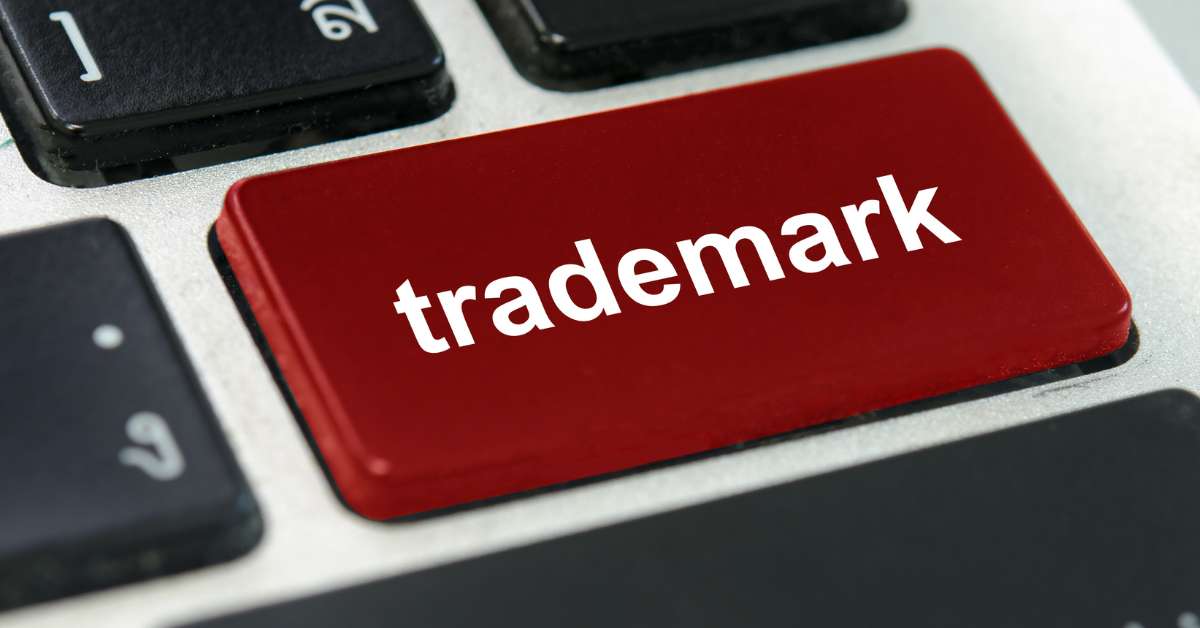Language:
Protect Your Business: How to Trademark a Brand Name

In the fast-paced world of business, establishing a strong brand identity is crucial to standing out from the competition and capturing the attention of consumers. Your brand name serves as the foundation of your company’s image, representing your products, services, and values. However, in today’s highly competitive marketplace, simply coming up with a unique and catchy brand name is not enough. To safeguard your brand and prevent others from capitalizing on your success, it’s important to secure legal protection through trademark registration. In this article, we will guide you through the process of effectively trademarking your brand name, from conducting a thorough search to navigating the registration process.
What Is a Trademark?
Trademarking a brand name grants you exclusive rights to its use, allowing you to differentiate your business from others and build a reputation based on trust and authenticity. It provides you with legal recourse against unauthorized use or infringement, ensuring that your hard-earned reputation remains intact.
Differences Between Trademark, Copyright, and Patent
Trademark, copyright, and patent are three different types of intellectual property protections, each serving its own purpose. Here’s a closer look at what sets them apart:
Trademark
A trademark safeguards brand names, logos, slogans, or other identifiers that distinguish products or services in the market. It plays a vital role in helping consumers recognize and associate a specific brand with its offerings. By securing a trademark, businesses gain exclusive rights to use and protect their brand identity, establishing a strong reputation and preventing confusion with similar marks.
Copyright
Copyright protection is designed for original creative works, such as literature, music, art, or software. It grants exclusive rights to the creators or owners of these works, allowing them to control reproduction, distribution, display, or performance. Copyright safeguards the expression of ideas, ensuring that creators have authority over their work and can prevent unauthorized copying or usage.
Patent
Patents are intended to protect inventions, encompassing new and useful processes, machines, or compositions of matter. By obtaining a patent, inventors gain exclusive rights for a specified period, usually around 20 years, in exchange for disclosing their invention to the public. This protection prohibits others from making, using, or selling the patented invention without permission. Patents incentivize innovation by rewarding inventors with exclusive rights and fostering technological advancements.
5 Steps to Trademark Your Business’s Name
there are several important steps to ensure a smooth and successful process. By following these five steps, you can navigate the trademark registration process with confidence and secure legal protection for your brand identity.
1. Assess if You Need a Trademark
The first step is to determine if obtaining a trademark is necessary for your business. Assess the significance of your brand name and logo, considering factors such as uniqueness, market competition, and long-term goals of your business. A distinctive brand that you plan to use extensively and protect from potential infringement may benefit from trademark registration.
2. Search for Existing Trademarks
Before proceeding with your trademark application, it’s essential to conduct a comprehensive search to check if a similar or identical trademark already exists. This involves searching through existing trademark databases, both at the national and international levels, to ensure your proposed brand name or logo is distinct and does not infringe on someone else’s rights.
3. Prepare Your Application
Once you’ve confirmed the availability of your desired trademark, it’s time to prepare your application. This involves gathering all the necessary information and documents required by the trademark office. These may include your business details, a description of your goods or services, and a clear representation of your trademark, such as a logo or wordmark.
4. Apply for a Trademark
With your application prepared, you can now submit it to the appropriate trademark office. The process and requirements may vary depending on your jurisdiction, so it’s important to follow the guidelines provided by the relevant authority. Pay the required fees and ensure that your application is complete and accurate to increase the chances of a successful outcome.
5. Receive Approval or Rejection
After submitting your application, it undergoes a review process by the trademark office. They will assess the uniqueness and compliance of your trademark with the established criteria. This review period can take several months or longer. If your application is approved, you will receive a certificate of registration, granting you exclusive rights to your trademark. In the event of rejection, you may have the opportunity to address any concerns raised by the examiner or consider appealing the decision.
Should You Trademark a Brand Name?
Deciding whether to trademark your brand name is an important consideration for any business. While trademark registration offers several benefits, it’s crucial to weigh the advantages and limitations before making a decision.
Enlisted below are a few advantages of trademarking a brand name:
Exclusive Rights and Protection: Trademark registration grants you exclusive rights to use your brand name, protecting it from unauthorized use by others. This legal protection helps establish your brand’s distinctiveness and prevents confusion in the marketplace.
Brand Recognition and Reputation: A registered trademark enhances brand recognition, as it signifies your commitment to quality and authenticity. It builds trust among consumers, differentiates your business from competitors, and contributes to the overall reputation and value of your brand.
Legal Recourse and Enforcement: With a registered trademark, you have the legal grounds to enforce your rights and take action against infringement. Trademark protection enables you to challenge unauthorized use, counterfeit products, or misleading activities that may harm your brand’s integrity.
Market Expansion and Licensing Opportunities: Trademark registration provides a solid foundation for expanding your business geographically or diversifying into new product lines. It also opens doors for licensing agreements, allowing you to generate additional revenue by granting others the right to use your brand under specific terms.
Deterrent to Potential Infringers: Having a registered trademark acts as a deterrent to potential infringers, as they are more likely to avoid using a brand name already protected by trademark law. This reduces the risk of brand dilution and unauthorized exploitation of your brand’s equity.
Limitations of a Trademark
While trademark registration offers numerous advantages, it’s important to consider the limitations it entails. Understanding these limitations will help you evaluate the scope and effectiveness of trademark protection for your brand name.
Limitations of trademarking a brand name include:
Limited Geographic Coverage: Trademark protection is typically granted on a country-by-country basis. Registering a trademark in one country doesn’t automatically provide protection in other jurisdictions, which may require separate applications and fees.
Specific Goods and Services: Trademark protection is specific to the goods and services for which it is registered. If you expand your business into new areas or introduce additional products, you may need to file additional trademark applications to cover those areas.
Maintenance and Renewal: Trademarks require ongoing maintenance and renewal to remain in effect. You must actively monitor and enforce your trademark rights and file renewal applications within specified timeframes to avoid potential loss of protection.
Cost and Time Investment: Trademark registration involves costs, including application fees and potential legal assistance. The process can also be time-consuming, with examination periods and potential opposition proceedings.
Enforcement Challenges: Enforcing trademark rights can be complex and may require legal action. Litigation or disputes can be costly and time-consuming, especially if infringement occurs in multiple jurisdictions.
Protect Your Business
Trademarking your brand name is a proactive and strategic step to protect your business and establish a strong brand identity. By following the outlined steps on how to trademark a brand name effectively, you can safeguard your intellectual property, differentiate yourself from competitors, and build consumer trust. Remember, trademark registration is a valuable investment that offers exclusive rights, legal protection, and opportunities for brand growth.
Meanwhile, when it comes to managing your business, doola can assist you with your bookkeeping needs, ensuring accurate financial records and freeing up your time to focus on what you do best.
FAQs
How much does it cost to trademark a brand name?
The cost of trademarking a brand name can vary depending on the jurisdiction and the number of classes of goods or services you want to cover. Generally, fees range from a few hundred to several thousand dollars, including application fees and legal assistance if needed.
How long does it take to trademark a name?
The timeframe for trademark registration can vary, but it typically takes several months to a year or more. The duration depends on factors such as the jurisdiction, the complexity of the application, any potential opposition, and the backlog of applications at the trademark office.
Do trademarks expire?
Trademarks require periodic renewal to maintain their validity. In most countries, trademarks initially have a validity of 10 years. However, they can be renewed indefinitely as long as the mark continues to be used and renewal fees are paid.
Can I claim trademark infringement on a brand with a city name?
It is possible to claim trademark infringement on a brand that includes a city name if you hold a registered trademark for a similar mark and can demonstrate that the use of the city name causes confusion or dilutes the distinctiveness of your mark. However, trademark laws can vary, so it is advisable to consult a legal professional to assess your specific situation.
Can I trademark a brand name that is similar but has more words?
Trademark registration is based on the likelihood of confusion. While adding more words to a brand name may reduce the likelihood of confusion, the decision ultimately depends on the specific circumstances and existing trademarks in the same industry or related fields. It is recommended to conduct a thorough trademark search and seek legal advice to assess the availability and registrability of a similar but longer brand name.
Keep reading
Start your dream business and keep it 100% compliant
Turn your dream idea into your dream business.















